The Neoclassicism art movement emerged in the mid-18th century as a powerful response to the ornate Rococo style, bringing back the timeless beauty and moral values of ancient Greece and Rome. This influential artistic revolution transformed Western culture and continues to shape our understanding of classical beauty today.
Key Points Summary
- Neoclassicism originated around 1750 during the Age of Enlightenment
- The movement emphasized simplicity, order, and moral virtue over decorative excess
- Jacques-Louis David and Jean-Auguste-Dominique Ingres were leading painters
- Antonio Canova revolutionized sculpture with idealized classical forms
- The movement influenced architecture, literature, and political symbolism
- Archaeological discoveries at Pompeii and Herculaneum inspired the revival
- Neoclassical principles continue to influence modern art and design
What is the Neoclassicism Art Movement?
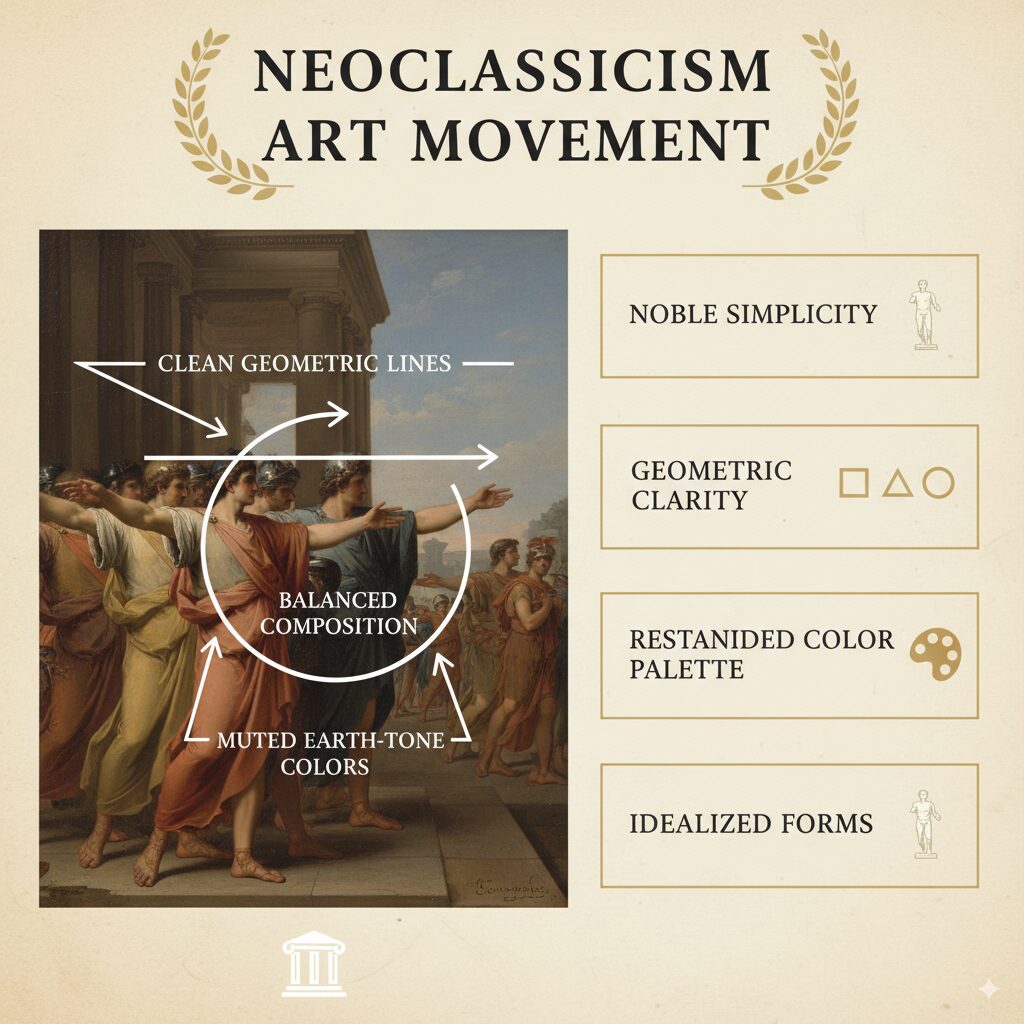
Neoclassicism was an artistic and cultural movement that sought to revive the aesthetic principles and moral ideals of ancient Greek and Roman civilizations. Unlike the painting styles and movements that came before it, Neoclassicism rejected the emotional excess and decorative complexity of Baroque and Rococo art in favor of clarity, order, and universal beauty.
This revolutionary approach to art emerged from the broader intellectual climate of the Enlightenment, where reason, scientific progress, and moral improvement became central values. Artists and thinkers believed that by studying and emulating classical antiquity, they could elevate both individual character and society as a whole.
Historical Origins and Context
The Age of Enlightenment Foundation
The Neoclassicism art movement took root around 1750 during a period of remarkable intellectual transformation. The Age of Enlightenment championed rational thought, scientific discovery, and individual liberty—values that perfectly aligned with the classical ideals of ancient Greece and Rome.
Archaeological Discoveries
The catalyst for this classical revival came from groundbreaking archaeological discoveries. The excavations at Herculaneum (1738) and Pompeii (1748) provided Europeans with their first direct glimpse into authentic ancient Roman life and art. These preserved cities revealed:
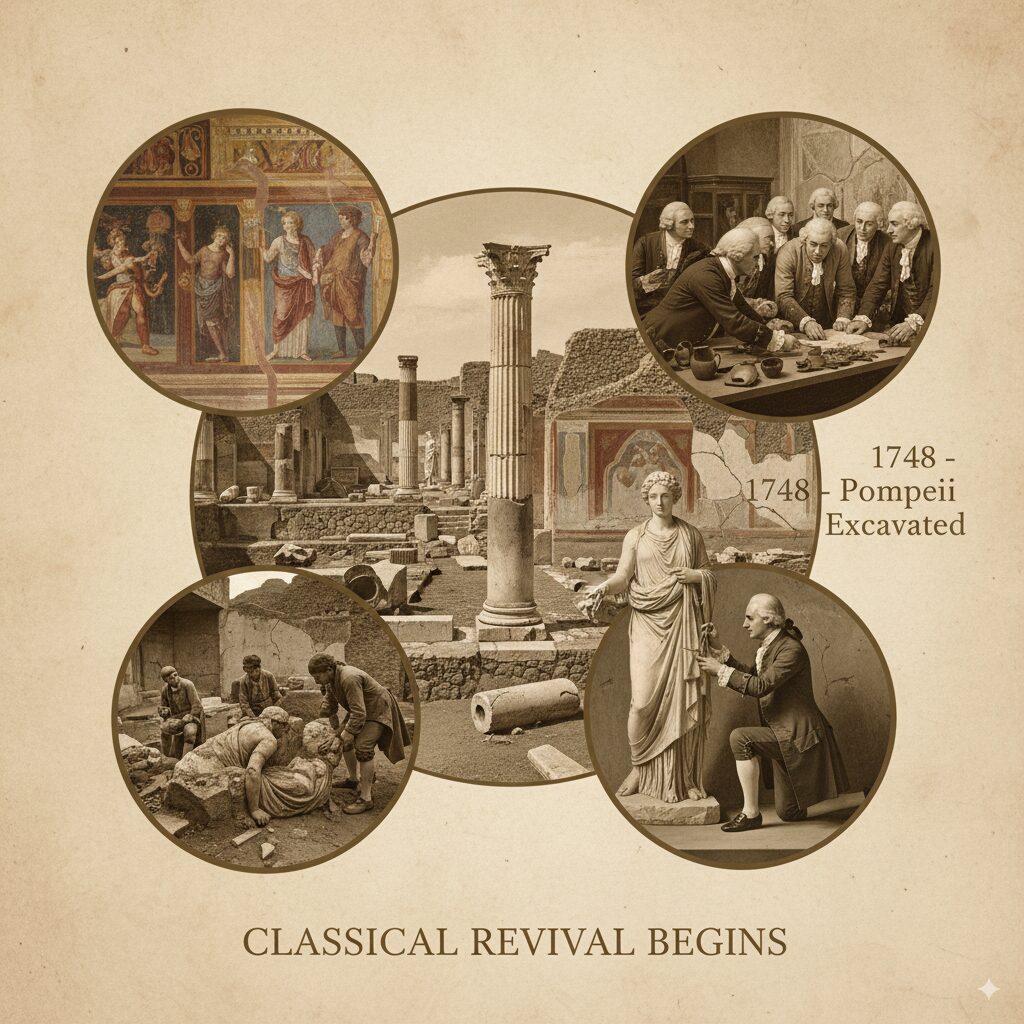
- Original Roman frescoes and decorative arts
- Classical architectural elements and proportions
- Daily life objects showing ancient aesthetic principles
- Sculptures demonstrating idealized human forms
Johann Joachim Winckelmann’s Influence
German art historian Johann Joachim Winckelmann became the intellectual father of Neoclassicism through his influential writings:
- “Thoughts on the Imitation of Greek Works in Painting and Sculpture” (1755)
- “History of Ancient Art” (1764)
Winckelmann’s famous phrase describing Greek art as having “noble simplicity and calm grandeur” became the movement’s guiding principle.
Core Characteristics of Neoclassical Art
The Neoclassicism art movement developed distinct visual and thematic features that set it apart from previous art movements:
Visual Elements
| Characteristic | Description | Example |
|---|---|---|
| Clean Lines | Geometric clarity with minimal ornamentation | Sharp, precise contours |
| Balanced Composition | Mathematical proportions and symmetry | Golden ratio applications |
| Muted Colors | Restrained, earth-tone palettes | Browns, grays, muted blues |
| Shallow Space | Limited depth to emphasize form | Frieze-like arrangements |
Thematic Content
Moral and Heroic Subjects: Neoclassical artists chose themes that emphasized:
- Civic virtue and patriotic sacrifice
- Historical events demonstrating noble character
- Mythological stories with moral lessons
- Religious subjects showing spiritual devotion
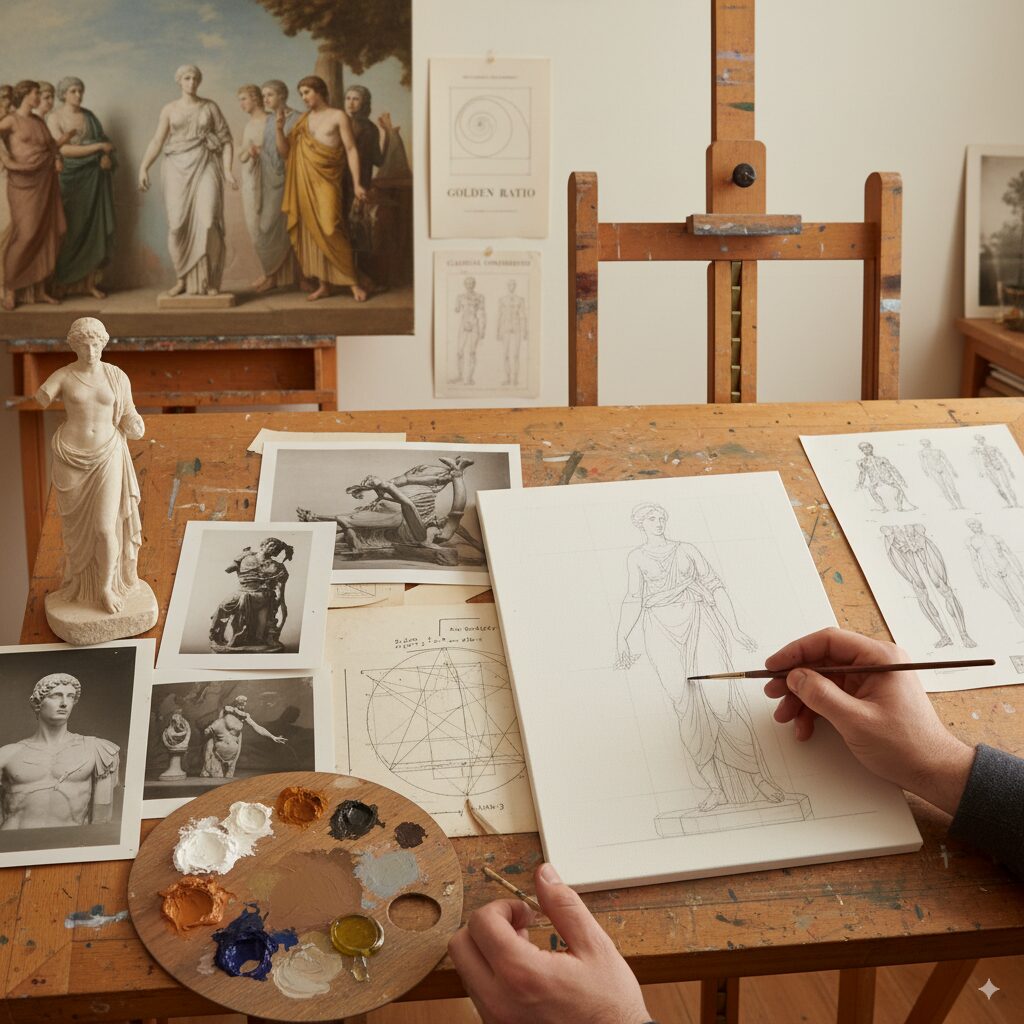
Idealized Human Forms: Following classical sculpture traditions, figures displayed:
- Perfect anatomical proportions
- Stoic emotional expressions
- Noble poses derived from ancient statuary
- Universal rather than individualized features
Technical Precision
Neoclassical painters demonstrated exceptional skill in:
- Linear drawing over painterly brushwork
- Accurate anatomy based on classical study
- Architectural perspective showing mathematical precision
- Surface finish with minimal visible brushstrokes
“The great principle of art is to copy nature; but to choose the most beautiful nature.”
Jacques-Louis David
Major Artists and Masterworks
Jacques-Louis David (1748-1825)
Considered the most influential Neoclassical painter, Jacques-Louis David created narrative history paintings that celebrated civic virtue and moral courage. His revolutionary approach to composition and subject matter made him the leading artist of his era.
Key Masterpieces:
- “The Death of Socrates” (1787): Depicts the philosopher’s noble acceptance of death, embodying intellectual integrity
- “Oath of the Horatii” (1784): Shows Roman brothers pledging loyalty to the state over personal feelings
- “Napoleon Crossing the Alps” (1801): Projects imperial authority through heroic classical imagery
David’s influence extended beyond painting—he directed artistic education and established the academic standards that dominated European art for generations.
Jean-Auguste-Dominique Ingres (1780-1867)
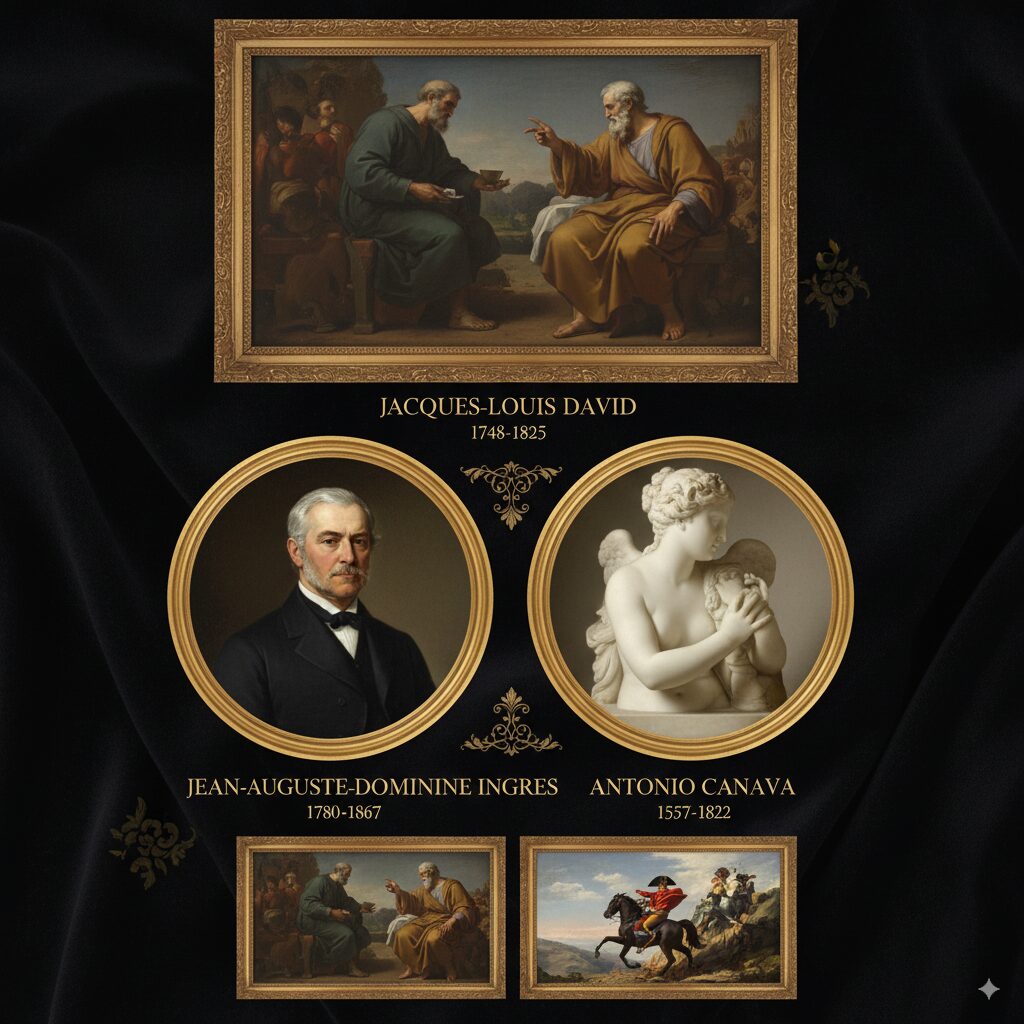
Ingres championed precise draughtsmanship and classical beauty, resisting the emotional excesses that would later define Romanticism. His mastery of light and shadow created luminous, idealized forms.
Notable Works:
- “The Turkish Bath” (1862): Demonstrates classical sensuality through idealized female forms
- “Portrait of Monsieur Bertin” (1832): Shows psychological depth combined with technical perfection
Antonio Canova (1757-1822)
The greatest Neoclassical sculptor, Canova achieved international fame with marble works rivaling ancient Greek statuary. His sculptures combined technical virtuosity with emotional tenderness.
Masterful Sculptures:
- “Psyche Revived by Cupid’s Kiss” (1787): Harmonizes romantic sentiment with ideal classical beauty
- “Perseus with the Head of Medusa” (1804-06): Exemplifies graceful movement and anatomical precision
Other Notable Artists
- William-Adolphe Bouguereau: Known for historical and mythological paintings with classical themes
- John Flaxman: Pioneer of Neoclassical sculpture and relief work in England
- Pompeo Batoni: Italian master who helped establish early Neoclassical principles
Neoclassicism vs Other Art Movements
Understanding how Neoclassicism relates to other famous artists and their styles helps clarify its unique position in art history:
Neoclassicism vs Rococo
- Rococo: Ornate, playful, decorative excess
- Neoclassicism: Simple, serious, moral clarity
Neoclassicism vs Romanticism
- Neoclassicism: Reason, order, universal ideals
- Romanticism: Emotion, individualism, dramatic expression
Neoclassicism vs Realism
- Neoclassicism: Idealized subjects and forms
- Realism: Direct observation of contemporary life
Cultural Impact and Influence
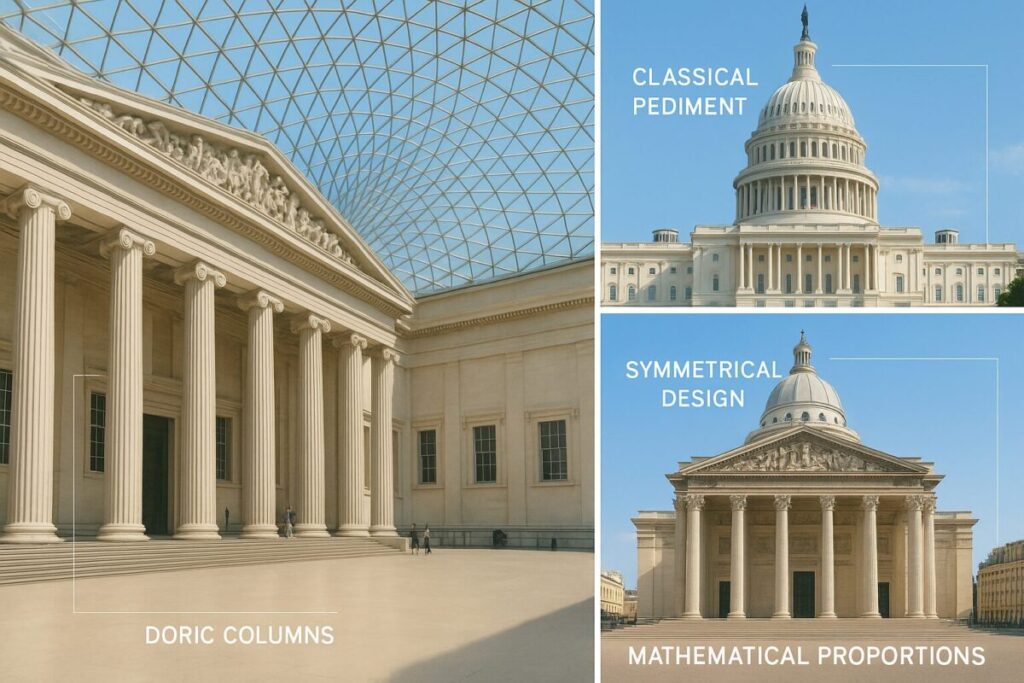
Architecture and Public Buildings
The Neoclassicism art movement profoundly shaped public architecture across Europe and America. Classical principles created buildings that symbolized:
- Democratic ideals through Greek temple forms
- Cultural permanence via Roman structural elements
- Civic authority using columns, pediments, and symmetrical facades
Famous Examples:
- British Museum (London)
- Panthéon (Paris)
- United States Capitol (Washington, D.C.)
Literature and Philosophy
Writers and poets embraced Neoclassical values:
- Structure and order in poetic forms
- Moral clarity in narrative themes
- Universal truths over personal expression
Authors like Alexander Pope and John Dryden applied these principles to create literature emphasizing reason and virtue.
Political and Social Authority
Governments and revolutionaries alike used Neoclassical art to project legitimacy:
- Revolutionary France adopted classical imagery for republican ideals
- Napoleonic Empire employed classical symbolism for imperial authority
- American Republic used classical architecture for democratic institutions
Techniques and Methods in Neoclassical Painting
Preparatory Studies
Neoclassical artists emphasized thorough preparation:
- Life drawing from nude models
- Compositional sketches working out arrangements
- Historical research ensuring accuracy
- Classical study of ancient sculptures and reliefs
Color Theory and Application
Unlike the bold palette of later movements, Neoclassical color theory emphasized:
- Earth tones and muted hues
- Local color over atmospheric effects
- Clear color separations rather than blended transitions
- Symbolic color use for moral and emotional meaning
Drawing and Linear Design
The foundation of Neoclassical art rested on superior draftsmanship:
- Contour drawing defining clear edges
- Anatomical accuracy showing classical proportions
- Geometric composition using mathematical relationships
- Surface modeling through carefully controlled light and shadow
The Movement’s Critics and Rivals
Romantic Opposition
As the 19th century progressed, Romanticism emerged as both rival and evolution of Neoclassical principles:
- Romantic artists like Eugène Delacroix challenged Neoclassical restraint
- Individual expression replaced universal ideals
- Emotional intensity trumped rational calm
- Contemporary subjects displaced historical themes
Academic Limitations
Critics argued that Neoclassicism’s emphasis on rules and precedent:
- Stifled creative innovation
- Created repetitive, formulaic art
- Ignored contemporary social realities
- Promoted elitist cultural values
Later Movements’ Response
Realism, Naturalism, and eventually Impressionism rejected Neoclassical idealism:
- Direct observation replaced classical models
- Contemporary life became worthy subject matter
- Individual perception gained importance over universal truth
- Technical innovation challenged academic methods
Legacy and Modern Influence
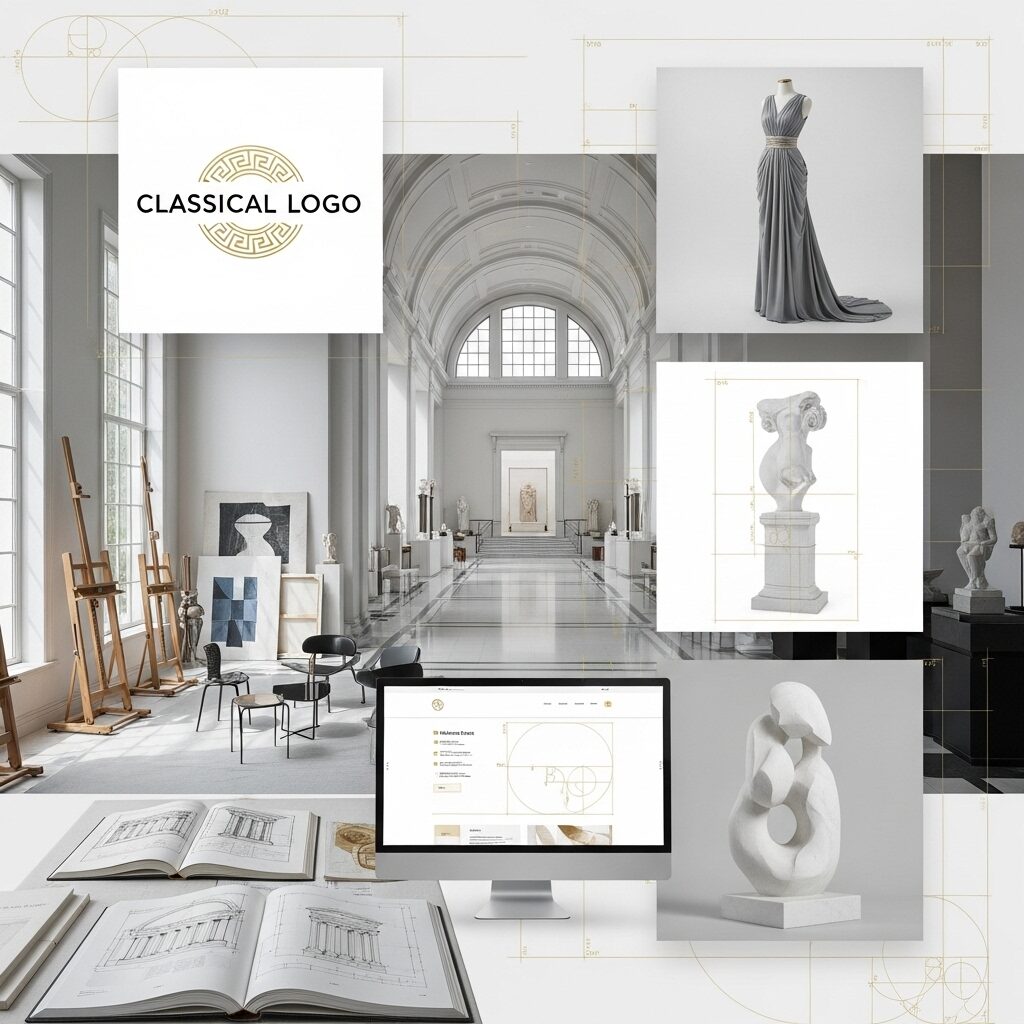
Contemporary Art and Design
The Neoclassicism art movement continues influencing modern culture:
Architecture: Public buildings still employ classical proportions and elements Art Education: Academic training emphasizes classical drawing and anatomy Design: Fashion, industrial design, and graphics draw on classical motifs
Political Symbolism: Government imagery frequently uses Neoclassical visual language
Digital Age Applications
Modern technology has found new uses for classical principles:
- Website design applying classical proportions
- Logo design using classical symmetry and balance
- Interior design incorporating classical architectural elements
- Fashion design referencing classical drapery and forms
How to Recognize Neoclassical Art
When viewing artwork, look for these identifying features of the Neoclassicism art movement:
Visual Checklist
- ✅ Clear, precise outlines and forms
- ✅ Balanced, symmetrical compositions
- ✅ Muted, earth-tone color palettes
- ✅ Classical architectural elements
- ✅ Idealized human figures
- ✅ Historical or mythological subjects
- ✅ Moral or heroic themes
- ✅ Smooth, polished surface finish
Subject Matter Indicators
- Ancient Greek or Roman themes
- Biblical scenes with classical treatment
- Contemporary events treated heroically
- Portraits showing noble character
- Allegories of virtue or civic duty
Learning from Neoclassical Masters
For Beginning Artists
Modern artists can learn valuable lessons from Neoclassical techniques:
Foundation Skills: Strong drawing abilities remain essential Composition: Classical balance principles create harmonious designs Form Study: Understanding anatomy improves figure drawing Color Restraint: Limited palettes can increase emotional impact
Study Resources
Museums with Major Collections:
- Metropolitan Museum of Art (New York)
- Louvre Museum (Paris)
- National Gallery (London)
- J. Paul Getty Museum (Los Angeles)
Online Learning:
- Virtual museum tours
- Academic art courses
- Classical drawing tutorials
- Art history documentaries
FAQs: Neoclassicism Art Movement
What is Neoclassicism in simple terms?
Neoclassicism is an art movement from the 1700s-1800s that brought back the styles and ideas of ancient Greek and Roman art. Artists focused on simple, balanced designs and moral themes rather than fancy decorations.
Who started the Neoclassical movement?
The movement was inspired by Johann Joachim Winckelmann, a German scholar who wrote about Greek art, and led by artists like Jacques-Louis David in France and Antonio Canova in Italy.
What’s the difference between Neoclassicism and Romanticism?
Neoclassicism emphasized reason, order, and universal ideals, while Romanticism focused on emotion, individualism, and dramatic expression. They were opposing movements that often competed for artistic influence.
Why was Neoclassicism important?
Neoclassicism helped establish academic art training, influenced government architecture worldwide, and created many of history’s most admired paintings and sculptures. It showed that classical principles could address modern concerns.
What materials did Neoclassical artists use?
Painters primarily used oil paints on canvas, while sculptors worked in marble and bronze. They preferred traditional, time-tested materials that allowed precise, detailed work.
How long did Neoclassicism last?
The main period was roughly 1750-1850, but classical influences continued throughout the 19th century and still appear in art, architecture, and design today.
Conclusion
The Neoclassicism art movement represents one of the most influential periods in Western cultural history. By reviving the timeless principles of ancient Greek and Roman civilization, Neoclassical artists created works that continue to inspire and instruct us today.
From Jacques-Louis David’s heroic historical paintings to Antonio Canova’s sublime marble sculptures, the movement demonstrated that classical ideals of beauty, virtue, and rational order remain eternally relevant. The Neoclassicism art movement’s emphasis on technical excellence, moral purpose, and universal principles established standards that still influence art education, public architecture, and cultural values.
Whether you’re studying painting techniques or simply appreciating great art, understanding Neoclassicism provides essential insight into how artistic excellence serves both aesthetic beauty and human betterment. The movement’s legacy reminds us that art at its finest elevates not just our visual experience, but our moral and intellectual aspirations as well.
Additional Resources
Essential Reading:
Museum Collections:
- Metropolitan Museum Essays – Neoclassicism
- Tate Gallery – Neoclassicism Art Terms
- National Galleries Scotland – Neoclassicism
Academic Resources:
